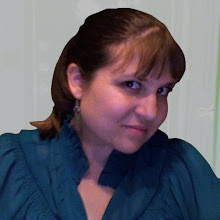

Over the months we refined our ideas, developed materials to request proposals and participation, booked facilities and catering, built a website from scratch, developed programming for the weekend, and invited several keynote speakers to come and share their insights into our topic: Design, Community and the Rhetoric of Authenticity.
Over 100 attendees gathered at the college of design on Friday afternoon from schools including: California College of the Arts, Cranbrook Academy of Art, Herron School of Art and Design, Otis College of Art and Design, Savannah College of Art and Design, and York University (Toronto, Canada). Our keynote speakers on Friday night were Elliott Earls from Cranbrook, and Brenda Laurel from CCA—they offered two different points of view in their twenty-minute presentations, and then, together, obliged us with a half-hour discussion moderated by Denise Gonzales Crisp. Saturday started with another keynote presentation by Jon Sueda from CCA, followed by several other presentations and panel discussions, lunch, and 12 breakout sessions.
The weekend was also peppered with 7 video interstitials, created by a small group of us over Christmas break (Caroline Maxcy Prietz, Dan McCafferty, Laura Rodriguez, Kelly Bailey and myself). The five of us carefully selected and contacted designers from all over the world, wrote pointed questions relating to both our symposium topic and the particular designer's work, and conducted interviews via Skype, capturing the discussion as a digital video. These videos were then edited and compiled, and played at intervals during the main stage events.



We had the opportunity to talk to Johanna Drucker, Dori Tunstall, Adrian Shaughnessey, Nolen Strals and Bruce Willen from Post Typography, Howard Rheingold, Rick Valicenti, and Jessica Helfand. Each Skype discussion lasted approximately thirty-minutes, and this material was then edited down to smaller nuggets to present during the event. Each interstitial consisted of an animated introduction and then two or three questions and answers.
These interstitial videos added seven additional voices (from seven very different places in the design world, in both geographic and philosophical terms) to the discussion. We hope to make these videos available to all the symposium participants (as well as the extended discussion with each interviewee) via the internet in the coming months.
Finally, I wanted to share a video I have created of the weekend. This should give you a brief overview of what happened here, at NCSU's College of Design, on a cold and rainy weekend in late January. The video includes music by one of Merge Records' artists, Spoon. Merge Records' own Maggie Fost sat on one of the symposium discussion panels (exploring how music industry design relates to authenticity), and gave a wonderful presentation of her company's work, philosophy and hopes for the future.
NCSU Graphic Design Graduate Symposium: January 2010 from Liese Zahabi on Vimeo.








